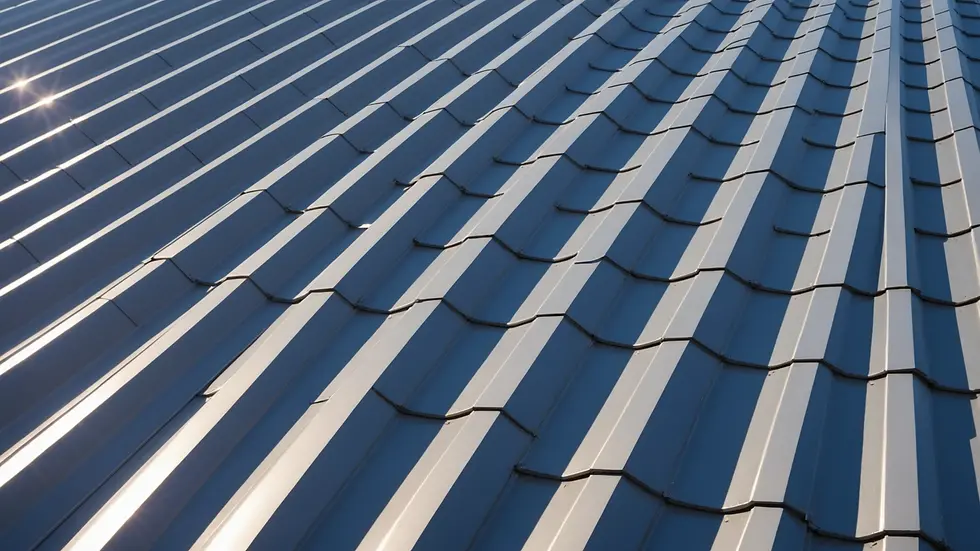Unveiling the Truth: How Much Does a Quality Roof Really Cost?
- Top Shield Roofing

- Dec 26, 2024
- 4 min read
Homeownership often brings many responsibilities, and one of the most vital, yet frequently overlooked, is the roof. A strong roof is essential for protecting your home and its inhabitants from the elements. Knowing the costs involved in roofing is crucial, whether you're building a new home or planning to replace your roof. This post will clarify the factors affecting roofing costs, helping you make informed choices.
Factors Influencing Roofing Costs
Roofing prices can fluctuate due to several key factors. By understanding these variables, you can better estimate your expenses.
Material Selection
Choosing roofing material is a major factor in total costs. Common options include:
Asphalt Shingles: These typically cost between $100 and $400 per square (100 square feet). They are favored for their affordability and ease of installation.
Metal Roofing: Prices range from $300 to $700 per square. Though initially more costly, metal roofs are durable and known for their energy efficiency.
Tile Roofing: With average costs from $600 to $800 per square, tile roofs are prevalent in warmer areas but may require additional structural support due to their weight.
Slate Roofing: This premium material, revered for its longevity and beauty, can cost anywhere from $800 to $2,000 per square and often needs specialized installation.
Wood Shingles: Ranging from $400 to $700 per square, wood shingles add charm but may demand more upkeep due to vulnerability to rot.
When selecting a material, consider both upfront costs and long-term maintenance. For example, a metal roof can last 50 years or more, while asphalt shingles usually last around 20 years.
Roof Size and Complexity
The roof's size and complexity directly affect costs. Larger roofs require more materials and labor, leading to higher expenses.
For example, a standard gable roof costs less than a hip roof or one with multiple facets. According to industry estimates, homeowners can expect to pay about 20 to 30% more for intricate designs due to the additional labor and expertise necessary for installation.
Labor Costs
Labor expenses can vary widely depending on location and the availability of skilled roofers. In cities, higher demand may lead to increased labor costs. A study indicated that labor costs typically account for 40 to 70% of the total roofing expenses, depending on your area and the complexity of the job.
Hiring specialized contractors can add to costs. However, investing in skilled labor often leads to better workmanship and fewer future repairs.

Accessibility
The roof's accessibility is another cost determinant. Roofs that are easy to reach generally result in lower labor costs. Conversely, a roof that is steep or hard to access may require more time and specialized equipment, leading to increased prices. According to roofing experts, accessibility-related costs can add as much as 10% to your total project cost.
Average Costs of Different Roofing Materials
A good grasp of the average prices for various roofing materials is vital for budgeting your project effectively:
Asphalt Shingles
Average Cost: $100 - $400 per square.
Details: A cost-effective choice with easy installation; also widely available.
Metal Roofing
Average Cost: $300 - $700 per square.
Details: Known for durability and energy efficiency, making it a smart long-term investment.
Tile Roofing
Average Cost: $600 - $800 per square.
Details: A popular choice in warmer regions, offering aesthetic appeal but often needing added structural support.
Slate Roofing
Average Cost: $800 - $2,000 per square.
Details: Stunning to look at with a long lifespan; however, it requires skilled installation.
Wood Shingles
Average Cost: $400 - $700 per square.
Details: Attractive but may come with higher maintenance needs compared to other materials.
Additional Expenses to Consider
Be sure to factor in other potential costs that may arise during your roofing project.
Permit Fees
Many locations require permits for roof replacements or installations. Check your local regulations to ensure compliance and understand any associated costs.
Old Roof Removal
Removing an old roof can add an unexpected expense, ranging from $100 to $150 per square, depending on how complex the existing roofing is.
Inspections and Repairs
Before installing a new roof, consider scheduling an inspection. If any repairs or reinforcements are needed, they will add to your overall costs.
Warranty Costs
Warranties can differ depending on the material chosen. Investing in a solid warranty may increase initial costs but offers protection against future issues.

Securing the Best Value
Making a substantial investment in your roof requires careful planning. Here are some strategies to ensure you gain the most value:
Get Multiple Quotes: Collect at least three estimates from reputable contractors. This helps you compare prices and materials, ensuring you select the best deal.
Research Contractors: Look into reviews and previous projects. Finding contractors with strong reputations can lead to better service.
Negotiate: Feel free to discuss pricing with contractors. Many are open to adjusting costs or providing discounts, especially during off-peak times.
Plan for the Future: Think about how long you intend to stay in your home. Choosing higher-quality materials may be worth it if you plan to live there for many years.
Final Thoughts
Being aware of roofing costs is essential for any homeowner. By considering materials, size, labor, and potential extra costs, you can make informed choices. Investing in a quality roof goes beyond immediate needs; it enhances your home and contributes to a safe living environment for many years ahead.
By understanding these factors, you are better equipped to evaluate your options and choose the most suitable solution for your budget and lifestyle. With thorough research and expert advice, you can achieve your roofing goals and protect your investment.




Comments